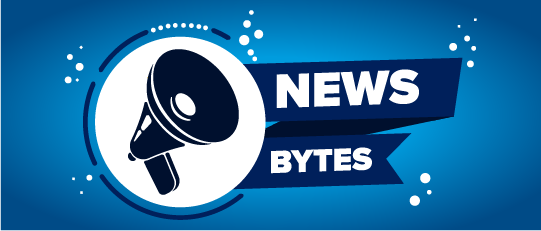For WorldatWork Members
- Considerations When Applying AI to People Analytics, Workspan Daily Plus+ article
- Pro Tips on Utilizing Data to Spot and Close Skills Gaps, Workspan Daily Plus+ article
- 3 Reasons Why Your Talent Marketplace Isn’t Working, Workspan Daily Plus+ article
- Internal Talent Marketplaces Get a Boost from AI, Workspan Magazine article
- Identify and Build a Wide Talent Moat, Workspan Magazine article
For Everyone
- Why Internal Talent Development Is Increasingly Popular, Workspan Daily article
- Elevate Engagement and Workforce Planning Through AI, Workspan Daily article
- Structure, Definition, Clarity: The Business Case for Job Architecture, Workspan Daily article
- Traditional Job Architecture Career Streams Collide with Modern Work, Workspan Daily article
Talent planning is generally viewed as a balancing act between present workforce needs (and available talent) and future business plans (the talent needed to accomplish the objectives).
But as market conditions, skills demands and employee expectations evolve faster than ever, traditional approaches are proving insufficient. Static role definitions, disconnected data systems and reactive hiring models no longer give leaders the agility they need to build resilient workforces.
This is where workforce intelligence can help. By connecting and analyzing data on tasks, skills, roles and talent, workforce intelligence better allows HR and total rewards (TR) leaders to:
- Anticipate shifts;
- Plan with precision; and,
- Make smarter decisions that align talent strategies with business goals.
Traditional Talent Planning Versus Workforce Intelligence
Many organizations still rely on outdated processes for workforce planning. Spreadsheets, manual reporting and siloed HR systems can make it difficult to see the bigger picture. Leaders may know how many people they have but not what tasks those employees are performing — or which of those tasks will be automated, augmented or redesigned in the near future.
This state may result in critical skills gaps, slower hiring cycles and missed opportunities for internal mobility. Forty-one percent of HR leaders responding to a Gartner survey said their organization’s workforce lacks required skills, while 62% viewed uncertainty around future skills as a significant risk. Without understanding how tasks are changing, organizations risk misjudging what skills they truly need to prioritize.
On the other hand, workforce intelligence presents the ability to integrate, analyze and apply data about people, tasks, skills and jobs — contextualized to the organization. It can create a single, connected layer of insights that gives leaders a real-time view of both current workforce capabilities and future needs.
Unlike traditional headcount planning, workforce intelligence allows organizations and their HR/TR pros to look beyond roles to examine the actual tasks that make up work. It can answer vital questions such as:
- What skills do we have today, and where are they?
- What tasks sit behind the work that is taking place here?
- What tasks are being reshaped by artificial intelligence (AI) and automation, and what new skills will that require?
- Where are we exposed to talent risks?
- Which roles should we recruit for, and which can be filled through reskilling or internal mobility?
How Workforce Intelligence Is Created
Workforce intelligence isn’t built from a single source. It requires bringing together multiple streams of data — pulled from your HR information system (HRIS) and applicant tracking system (ATS), learning platforms, and unstructured resumes and job descriptions — into one connected view.
AI can play a critical role here by:
- Mapping tasks to skills. AI can analyze job data and employee activity to identify the tasks being performed, then connect those tasks to the underlying skills required.
- Detecting patterns and risks. By continuously analyzing task and skills data, AI can surface emerging skill shortages and highlight where roles are at risk of disruption.
- Providing dynamic insights. Rather than static reports, AI enables real-time workforce intelligence that evolves as tasks change, technologies advance and business priorities shift.
This intelligence allows leaders to move from describing the workforce they had yesterday to designing the workforce they need tomorrow.
Why It Matters Now
Workforce intelligence is emerging as the foundation of smarter talent planning. In a world of constant change, organizations that can understand and connect their workforce data — at the level of tasks, skills and roles — likely will be the ones that are able to move faster, adapt better and unlock their workers’ full potential.
Additionally, the rise of AI and automation means tasks are changing faster than job titles. Workforce intelligence helps HR/TR leaders keep pace. With the right data, they can understand and forecast task and skills shifts, and then:
- Redesign jobs with agility, as work evolves.
- Strengthen internal mobility by aligning employees to opportunities that match both their skills and the tasks driving business outcomes.
- Optimize learning and development, reskilling impacted employees toward new roles and filling emerging gaps.
- Recruit smarter, with speed and precision— and hiring where demand cannot be met internally.
Organizations that adopt this approach may be better equipped to navigate disruption. They can move from reactive hiring to proactive workforce design, increasing the likelihood that the right people — with the right skills— are focused on the right tasks, at the right time.
Editor’s Note: Additional Content
For more information and resources related to this article, see the pages below, which offer quick access to all WorldatWork content on these topics:
#1 Total Rewards & Comp Newsletter
Subscribe to Workspan Weekly and always get the latest news on compensation and Total Rewards delivered directly to you. Never miss another update on the newest regulations, court decisions, state laws and trends in the field.








